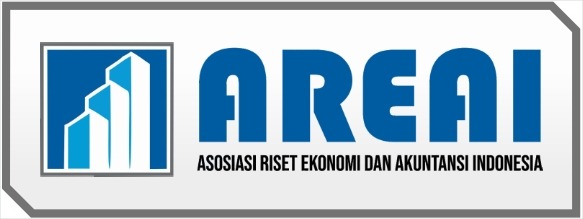Analysis of Tax Service Quality and Taxpayer Satisfaction During the Covid-19 Pandemic at the Pratama Tax Office Cileungsi, Bogor, West Java, Indonesia
DOI:
https://doi.org/10.61194/ijat.v1i3.134Keywords:
Tax Service Quality, Taxpayer Satisfaction, SERVQUAL Model, Covid-19 Pandemic, Pratama Tax Office CileungsiAbstract
Service is the effort to achieve public service quality for taxpayers, all services are provided through Integrated Service Centers (ISC) at each Tax Service Office (TSO) and at Tax Service, Counseling, and Consultation Offices (TSCTCO) throughout Indonesia's tax areas, and taxpayers' satisfaction with the services provided by KPP Pratama Cileungsi, as well as the initiatives undertaken and planned by KPP Pratama Cileungsi to improve service quality during the Covid-19 pandemic. This study identified several issues: 1) Taxpayer satisfaction with tax services at the Tax Service Office KPP Pratama Cileungsi during the Covid-19 pandemic, 2) Efforts made by the Tax Service Office KPP Pratama Cileungsi to enhance the quality of tax services during the Covid-19 pandemic. The research method employed a descriptive qualitative approach conducted in a natural setting, with data collected using interview guidelines and documentation. The research informants included strategic taxpayers, tax volunteers, and employees of KPP Pratama Cileungsi. Data analysis encompassed activities such as data reduction, presentation, and drawing conclusions/verification. The results of this study revealed that tax class activities are part of cooperation with the district government to ensure that the public is aware of and utilizes these tax classes as a means of learning and increasing tax obligation awareness. Creating or re-sharing tax education content through a dedicated YouTube channel serves as a contemporary education platform with easy access anytime and anywhere for taxpayers, given the extensive jurisdiction of KPP Pratama Cileungsi. This YouTube channel should be promoted through village government devices to be known by the wider community, especially in the jurisdiction area of KPP Pratama Cileungsi.
References
Adang, F. (2017). Pengaruh Kualitas Pelayanan Terhadap Tingkat Kepuasan Wajib Pajak (Studi Empiris Di KPP Pratama Kebon Jeruk Satu Tahun 2015). Jurnal Ultima Accounting, Vol. 9 No. 1 Juni 2017. Diunduh 19 Maret 2021, dari situs World Wide Web:https://doi.org/10.31937/akuntansi.v9i1.586.
Arikunto, Suharismi. 2006. Prosedur Penelitian Suatu Pendekatan Praktik. Jakarta: PT.Rineka Cipta.
Cannon, Perreault, Mccarty. 2010. Pemasaran Dasar pendekatan Manajerial Global Buku 1.Edisi 16. Jakarta: Salemba Empat.
Darmawanto, A. Tri. (2015). Analisis Kualitas Pelayanan Pajak Terhadap Kepuasan Wajib Pajak Badan Di Kantor Pelayanan Pajak Madya Malang. Jurnal JIEP, Vol. 15, No 1 Maret 2015. Diunduh 19 Maret 2021, dari situs World Wide Web:https://jurnal.uns.ac.id/jiep/article/view/9890.
Direktorat Jenderal Pajak. 2011. Buku Hak dan Kewajiban Wajib Pajak. Jakarta: Direktoat Penyuluhan, Pelayanan dan Hubungan Masyarakat.
Hadi, N. dan Mahmudah U. (2018). Jurnal Pengaruh Kualitas Pelayanan Perpajakan Terhadap Kepatuhan Wajib Pajak. Jurnal Akuntansi Syariah AKTSAR, Volume 1 Nomor 2, Desember2018, Halaman 257-274. Diunduh 19 Maret 2021, dari situs World Wide Web:http://dx.doi.org/10.21043/aktsar.v1i2.5222.
Hayat. (2017). Manajemen Pelayanan Publik. Depok: Rajawali Pers.
Inhofe Rapert, M., & Wren, B. M. (1998). Service quality as a competitive opportunity. Journal of Services Marketing, 12(3), 223–235. https://doi.org/10.1108/08876049810219539
Izogo, E. E., & Ogba, I.-E. (2015). Service quality, customer satisfaction and loyalty in automobile repair services sector. International Journal of Quality & Reliability Management, 32(3), 250–269. https://doi.org/10.1108/IJQRM-05-2013-0075
Kotler, P., & Keller, K. L. (2016). Marketing Management (15th ed.). Pearson Education, Inc.
Kotler, Philip dan Kevin Lane Keller. 2009. Manajemen Pemasaran Edisi 12 Jilid 1. Jakarta: PT. Indeks.
Lai, F., Griffin, M., & Babin, B. J. (2009). How quality, value, image, and satisfaction create loyalty at a Chinese telecom. Journal of Business Research, 62(10), 980–986. https://doi.org/10.1016/j.jbusres.2008.10.015
Lupiyoadi, R. (2018). Manajemen Pemasaran Jasa: Berbasis Kompetensi; Edisi 3 (3rd ed.). Salemba Empat.
Mahmudi. (2005). Manajemen Kinerja Sektor Publik. Yogyakarta: Unit Penerbit dan Percetakan STIM YKPN.
Maksudi, B. Iriawan. (2017). Dasar-Dasar Administrasi Publik. Depok: Rajawali Pers.
Martínez García, J. A., & Martínez Caro, L. (2009). Understanding customer loyalty through system dynamics. Management Decision, 47(1), 151–172. https://doi.org/10.1108/00251740910929768
Neuman, W. L. (2014). Social Research Methods: Qualitative and Quantitative Approaches (7th ed.). Pearson Education Limited.
Oliver, R. L. (2014). Satisfaction: A behavioral perspective on the consumer: A behavioral perspective on the consumer. Routledge.
Parasuraman, A., Zeithaml, V. A., & Berry, L. (1988). SERVQUAL: A multiple-item scale for measuring consumer perceptions of service quality. 1988, 64(1), 12–40.
Rangkuti, Freddy. 2006. Measuring Customer Statification: Gaining Customer Relationship Strategy, Teknik Mengukur dan Strategi Meningkatkan Kepuasan Pelanggan dan Analisa Kasus PLN-JP. Jakarta: PT. Gramedia Pustaka Utama.
Sedarmayanti. (2009). Reformasi Administrasi Publik, Reformasi Birokrasi, dan Kepemimpinan Masa Depan. Bandung: Refika Aditama
Sefnedi, & Indra. (2013). Analisis Dimensi Kualitas Pelayanan dan Pengaruhnya Terhadap Loyalitas Wajib Pajak Restoran Dengan Kepuasan Sebagai Variabel Mediator. Jurnal Universitas Paramadina, 10(3).
Stanton, William J. 1993. Prinsip Pemasaran. Jakarta: Edisi ke Tujuh. Alih Bahasa Y. Lamarto. Jakarta: Erlangga.
Sugiyono. (2019). Metode Penelitian Kuantitatif, Kualitatif dan R&D. Bandung: Alfabeta.
Sugiyono. 2001. Statistika Untuk Penelitian. Bandung: Alfabeta.
Suliyanto. 2009. Metode Riset Bisnis. Yogyakarta: CV.Andi Offset.
Swasta, Basu DH dan Irawan. 2000. Manajemen Pemasaran Modern. Jakarta: Liberty.
Taghizadeh, H., Taghipourian, M. J., & Khazaei, A. (2013). The Effect of Customer Satisfaction on Word of Mouth Communication. Research Journal of Applied Sciences, Engineering and Technology, 5(8), 2569–2575. https://doi.org/10.19026/rjaset.5.4698
Titing, A. S., & Wonua, A. R. (2020). Pengaruh Kepuasan Pelanggan dan Loyalitas Pelanggan Terhadap Word of Mouth (Studi Kasus di Cafe Come On Coffe Pomalaa). Jurnal Administrasi Dan Manajemen, 10(1), 34–47. https://doi.org/10.52643/jam.v10i1.873
Tjiptono, F. (2005). Pemasasan Jasa. Malang: Bayu Media.
Tjiptono, F. (2016). Service, Quality & satisfaction. Andi Offset.
Yulia, N. (2018). Hubungan antara Kualitas Pelayanan dengan Kepuasan Pelanggan. Jurnal Manajemen Komunikasi, volume 4, No. 2/2018. Diunduh 19 Maret 2021, dari situs World Wide Web: http://karyailmiah.unisba.ac.id/index.php/mankom/article/view/11945.
Zeithaml, Bitner A, Mary Jo, Bitner, Dwayne D, Gremler2. 2006. Service Marketing: Integrating Customer Focus Across The Firm. McGraw. Hill.
Downloads
Published
How to Cite
Issue
Section
License
Copyright (c) 2023 Solehan Ma'ruf, Ayuning Budiati, Soesilo Wibowo

This work is licensed under a Creative Commons Attribution 4.0 International License.






